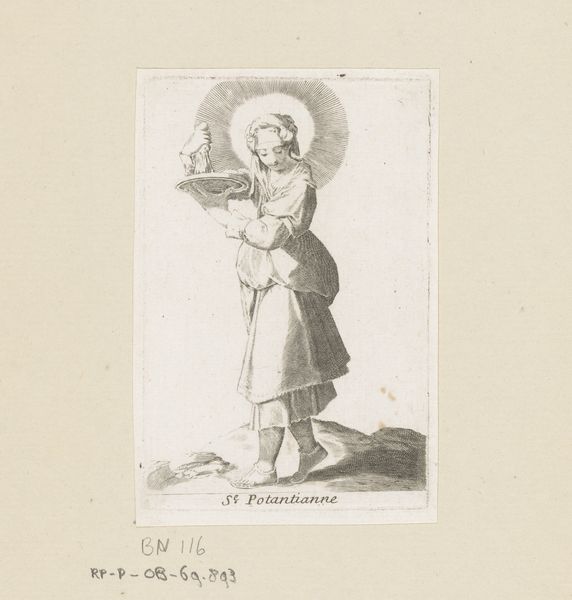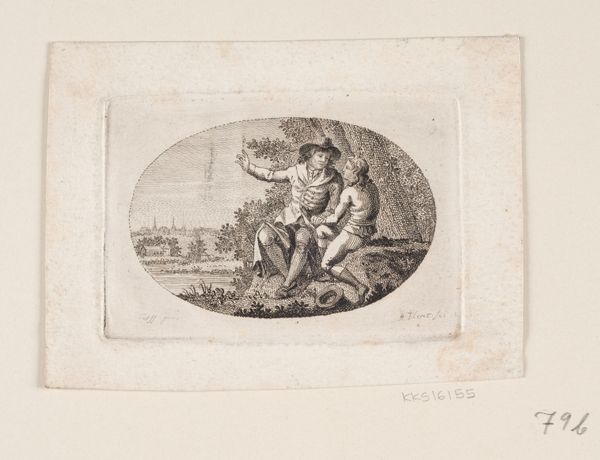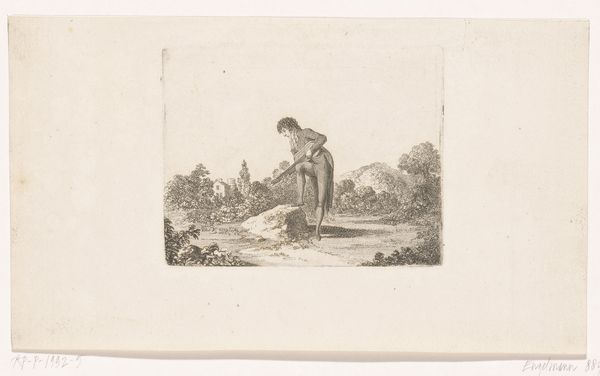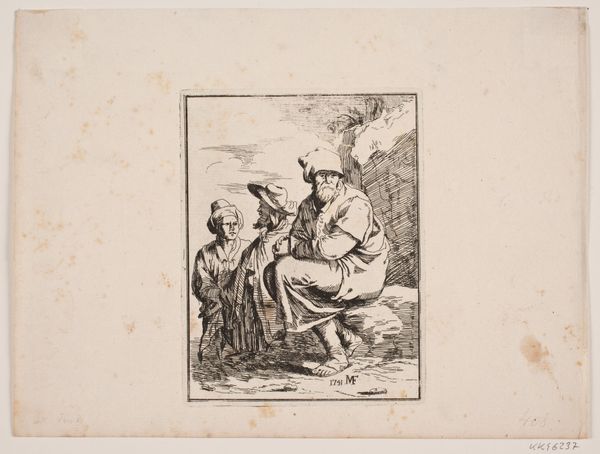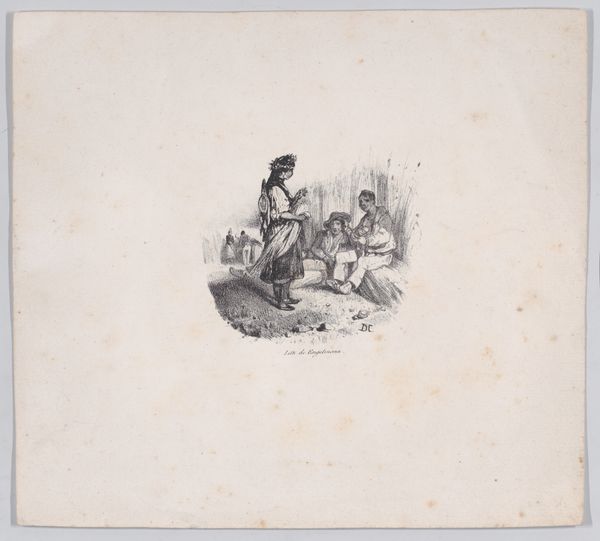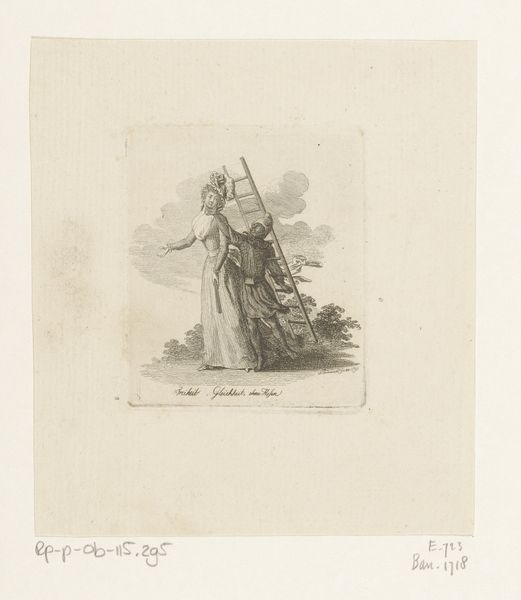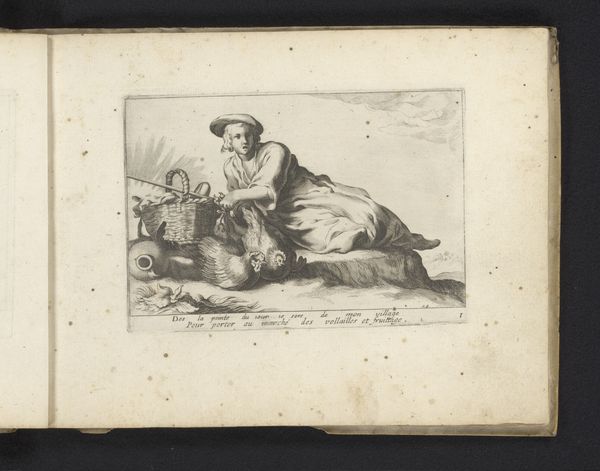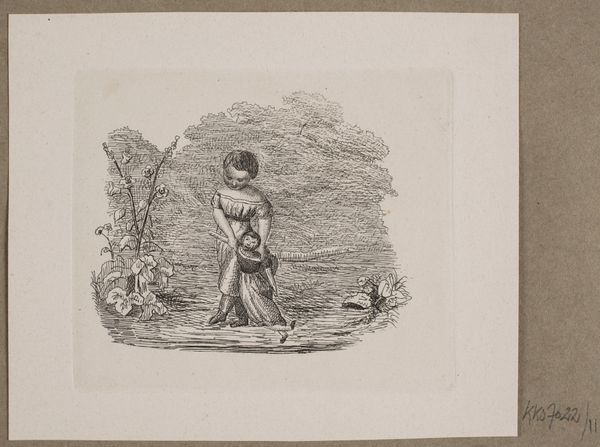
print, engraving
#
portrait
# print
#
history-painting
#
engraving
Dimensions: 58 mm (height) x 77 mm (width) (plademaal)
Curator: Here we have the engraving "Håndskriftsamleren Arni Magnusson" dating to 1773, created by J.F. Clemens. Editor: My first impression is that the scene is more symbolic than naturalistic. The landscape in the background appears somewhat abstract, with hatching techniques typical of the time. The detail seems focused on representing a learned identity through attributes, no? Curator: Precisely. Clemens created this portrait to commemorate Árni Magnússon, the famous Icelandic scholar and collector of manuscripts. Consider this print within the broader Enlightenment project of cataloging knowledge, with institutions such as museums and libraries becoming crucial to forming national identities. Editor: And it makes you wonder about whose history gets preserved and who gets to decide. Magnússon played a critical role in preserving Icelandic sagas and other historical texts, without which so much Indigenous Nordic intellectual heritage would have vanished. But it's not simply about a benevolent rescue. Access to this material then and now reflects and perpetuates power dynamics, doesn't it? Who was, and is, allowed into this archive? Curator: Yes, questions about access and the construction of cultural narratives are essential. But this image also speaks to ideas about erudition and scholarly dedication. The collection itself represents a national treasure, linking back to concepts of Icelandic nationhood and independence. Look at the symbolic items surrounding him, tools representing geographic mapping and the manuscripts themselves all point to discovery. Editor: That serpent-like creature definitely gives off that aura, suggesting protection of and access to this wealth of texts is no simple matter. How often is the rhetoric of cultural preservation wielded to control rather than to liberate cultural expression? I feel like the question needs more questioning. Curator: Absolutely, cultural stewardship must always be critically examined. The afterlife and contemporary access to these objects raise important questions, like how these archives continue to inform cultural understanding today. Editor: This image sparks consideration around archives: who owns them, who can access them, and whose histories do they privilege?
Comments
No comments
Be the first to comment and join the conversation on the ultimate creative platform.

